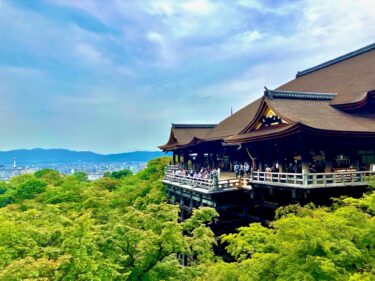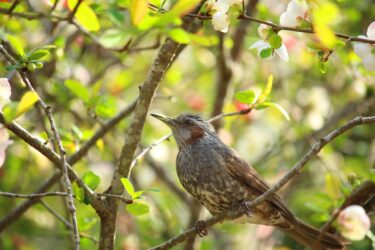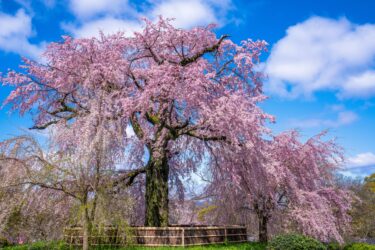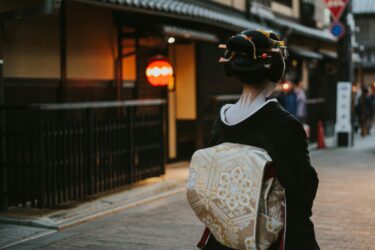When you visit Kyoto, you can’t miss visiting some of the city’s over 1,000 temples and shrines. With that many to choose from, you might wonder how to prioritize sightseeing during your visit, so to help out, we’ve put together a simple list of some of the temples (and one shrine!) you absolutely must see while you’re in Kyoto. Each one has a unique feature that makes it noteworthy, and through all you’re sure to gain a rich impression of this ancient city’s cultural heritage.
A Diversity of Temples in Kyoto
You might be wondering what the difference between a “temple” and a “shrine” is, anyway. In general, temples are Buddhist and shrines are dedicated to indigenous Shinto beliefs, although these religious and spiritual practices have tended to merge and overlap with one another throughout Japan’s history. In both buildings, you can find an array of incredibly beautiful architectural styles from throughout the ages. Kyoto’s shrines and temples, in particular, are meticulously preserved, even as they’ve weathered wars and natural disasters over the centuries
Must-Visit Temples in Kyoto
Kyoto is home to an impressive array of temples, each offering a unique glimpse into the spiritual, cultural, and architectural tapestry of Japan. We’ve compiled a list of some of the temples (and shrine!) you simply can’t afford to miss when you visit:
Kinkaku-ji (The Golden Pavilion)
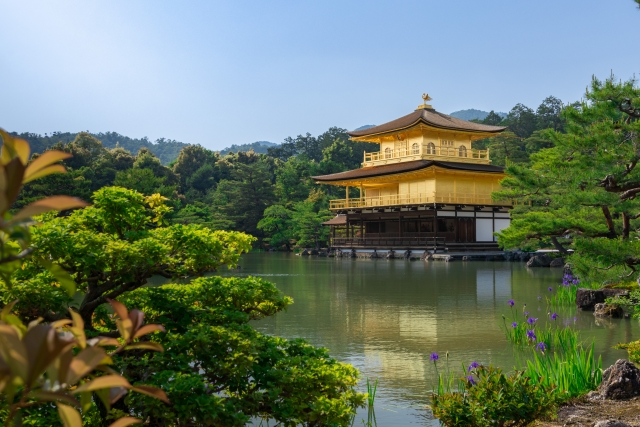
Kinkaku-ji, or the Golden Pavilion, is one of Kyoto’s most visually striking temples. Originally built in the 14th century as a retirement villa for the shogun Ashikaga Yoshimitsu, the structure was later converted into a Zen Buddhist temple by his son. The gold-plated exterior for which the temple is known creates a beautiful reflection onto Kyoko-chi Pond (literally, “mirror pond”), a sight you won’t want to miss. The surrounding walking gardens complement the pavilion’s grandeur, providing a peaceful space for visitors to appreciate this historic site.
Fushimi Inari-taisha Shrine
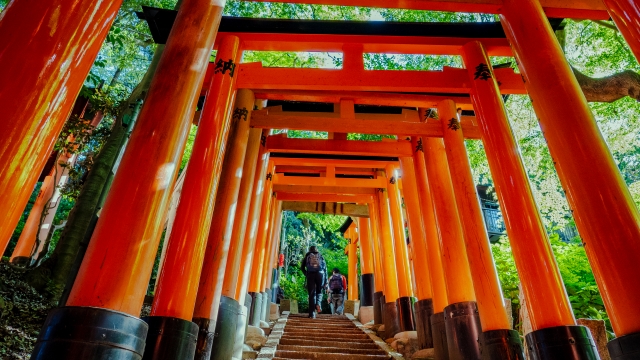
Fushimi Inari-taisha, though not a temple, is a well-known shrine that attracts travelers with its striking vermilion torii gates (a common feature at Shinto shrines in Japan) forming a tunnel towards Mount Inari. The vibrant gates stand out against the green forest backdrop, making for a visually captivating scene that you may recognize from scenes in the 2005 film Memoirs of a Geisha. Visitors can walk along the torii-lined paths, heading up the mountain to discover hidden shrine buildings and enjoy panoramic views. There are also many shops on the road leading to the temple, if you’re looking for some snacks or souvenirs.
Ryoan-ji Temple
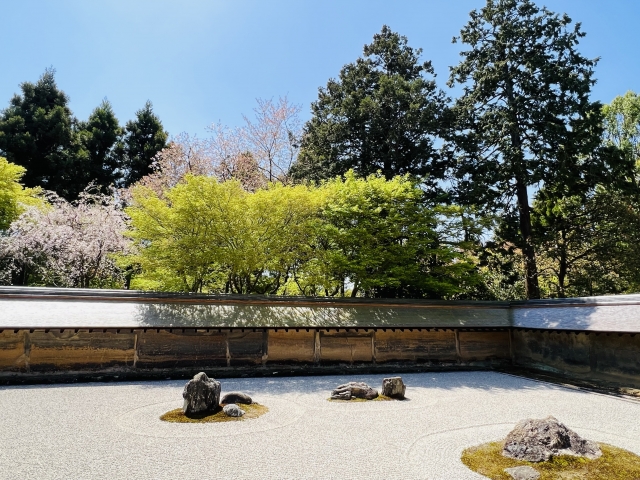
For those seeking a tranquil oasis amidst the urban bustle, Ryoan-ji Temple’s Zen rock garden offers a meditative retreat. Though much of the temple grounds are beautiful, it’s the enigmatic arrangement of fifteen rocks amidst raked gravel in the temple’s rock garden that’s the star. While not as visually flashy as some other Kyoto temples, you may find a deeper appreciation for the minimalist aesthetic and serene ambiance here just by sitting on the edge of the temple overlooking the garden and pausing for a while.
Kiyomizu-dera Temple
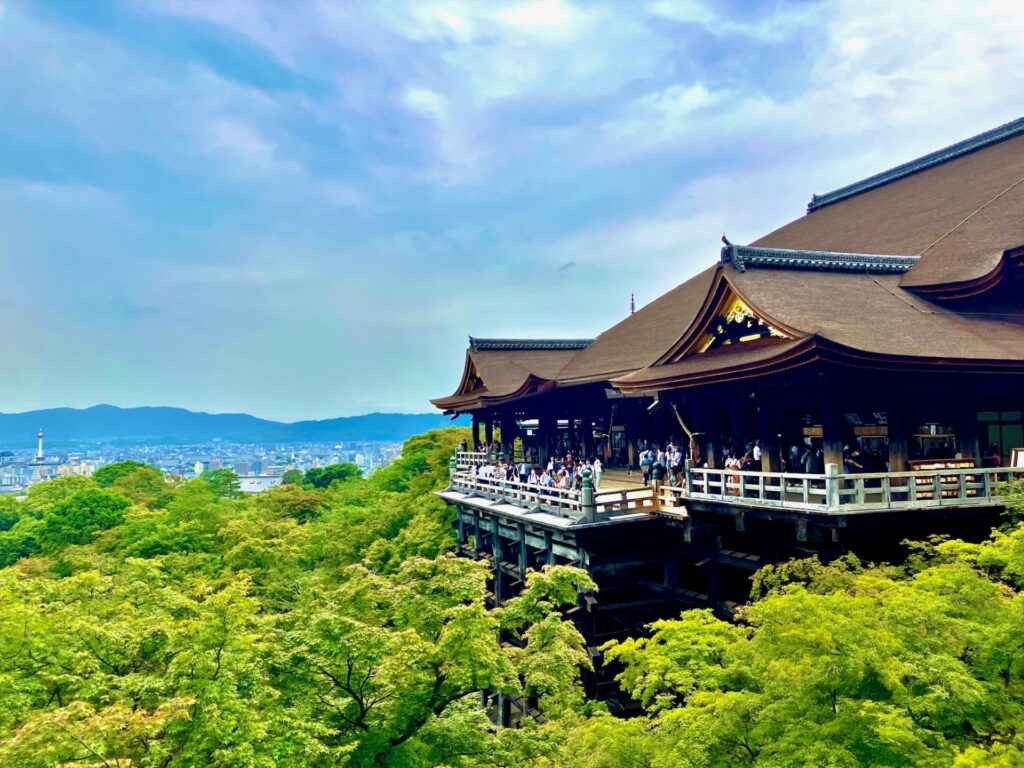
Kiyomizu-dera Temple is a centrally-located temple with an incredible wooden hall overlooking a verdant panorama of Kyoto City and its surrounding hills. This overlook is especially popular during the fall, when the many maple trees around the temple are shown off with their brilliant red hues. The temple precincts also house Jishu Shrine, where visitors can test their luck in romance: you’ll have good fortune in love, it’s said, if you can successfully walk the path between the shrine’s two stones.
Though these temples and shrine are particularly noteworthy, Kyoto boasts a myriad of temples and shrines, each with its own allure and cultural significance. We encourage you to explore them all, from the serene moss gardens of Saiho-ji Temple to the resplendent pagodas of To-ji Temple.
Cultural Events and Festivals at Temples and Shrines
Throughout the year, Kyoto’s temples come alive with a vibrant tapestry of cultural events and traditional festivals that offer visitors a deeper insight into Japan’s living heritage. You may want to see if there are any festivals or other annual events during your visit.
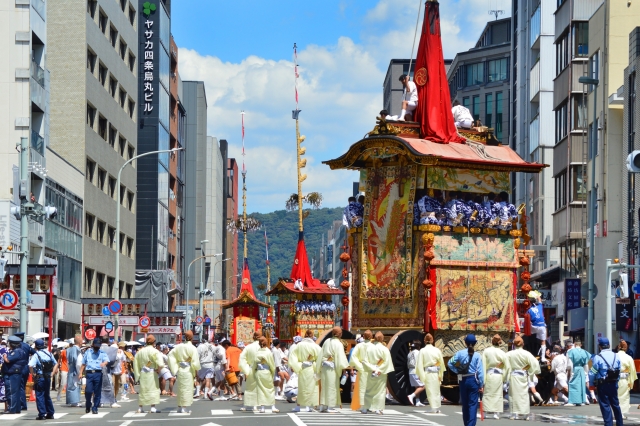
One of the most iconic events in Kyoto is the Gion Festival, a month-long festival held in July, featuring colorful processions of lavishly adorned floats, traditional music and dance performances, and vibrant street festivities. Centered around Yasaka Shrine, the highlight of the festival is its grand procession of towering floats paraded through the historic streets of Gion.
Autumn foliage viewing is another annual event mostly centered around Kyoto’s temples. Since these often feature beautiful gardens with Japanese maple trees, they offer the perfect venues for viewing the vibrant reds and oranges that transform the landscape during this season. Nighttime illuminations are a special treat that’s often available to visitors at this time, too: though temples typically close around 4 or 5 p.m. in the afternoon, autumn seeing opening hours that extend into the night, during which time visitors can purchase tickets to wander the temple grounds at night and enjoy the splendor of the autumn leaves lit up specially from below.
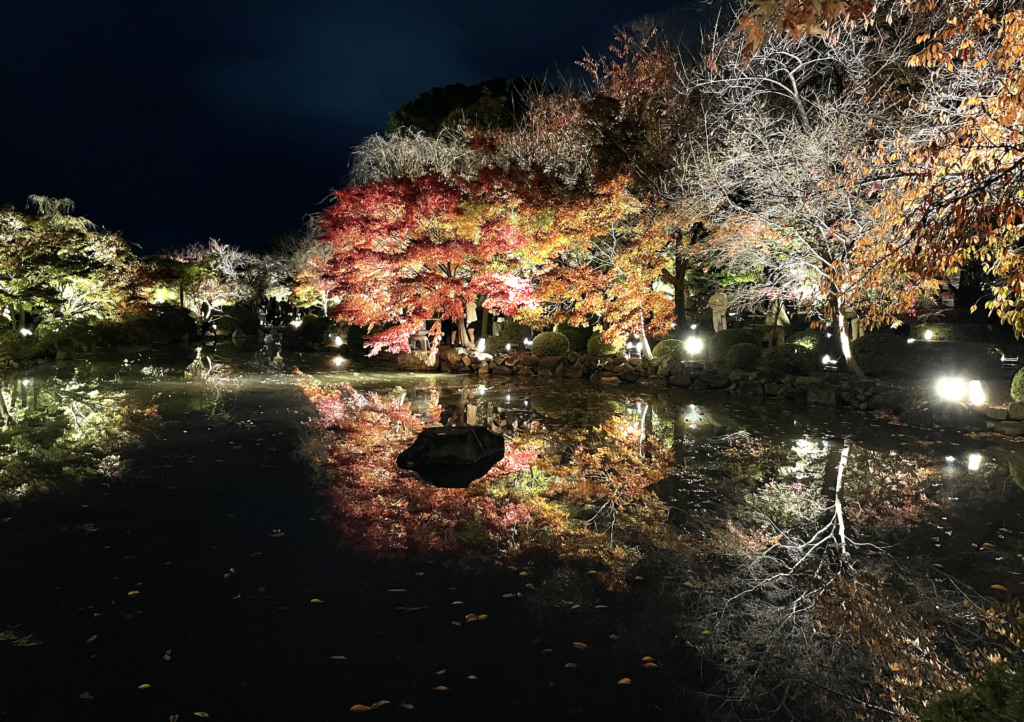
Similarly, in the springtime, cherry blossom viewing, or hanami, is a cherished tradition in Kyoto. The delicate blossoms draw visitors to some temple gardens once again. Locations like Heian-jingu Shrine and Daigo-ji Temple in particular become popular, so you may want to time your visit to an earlier part of the day.


